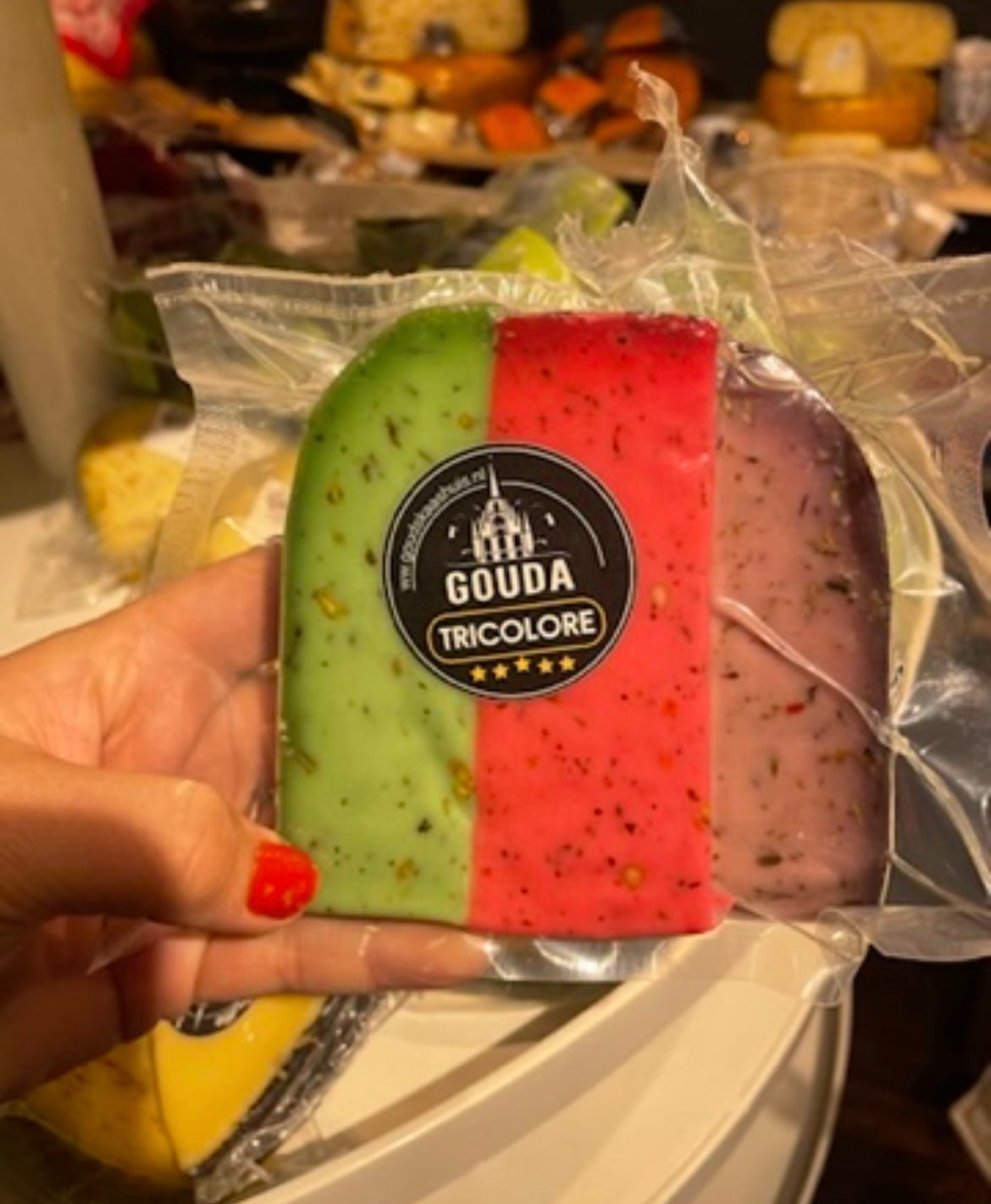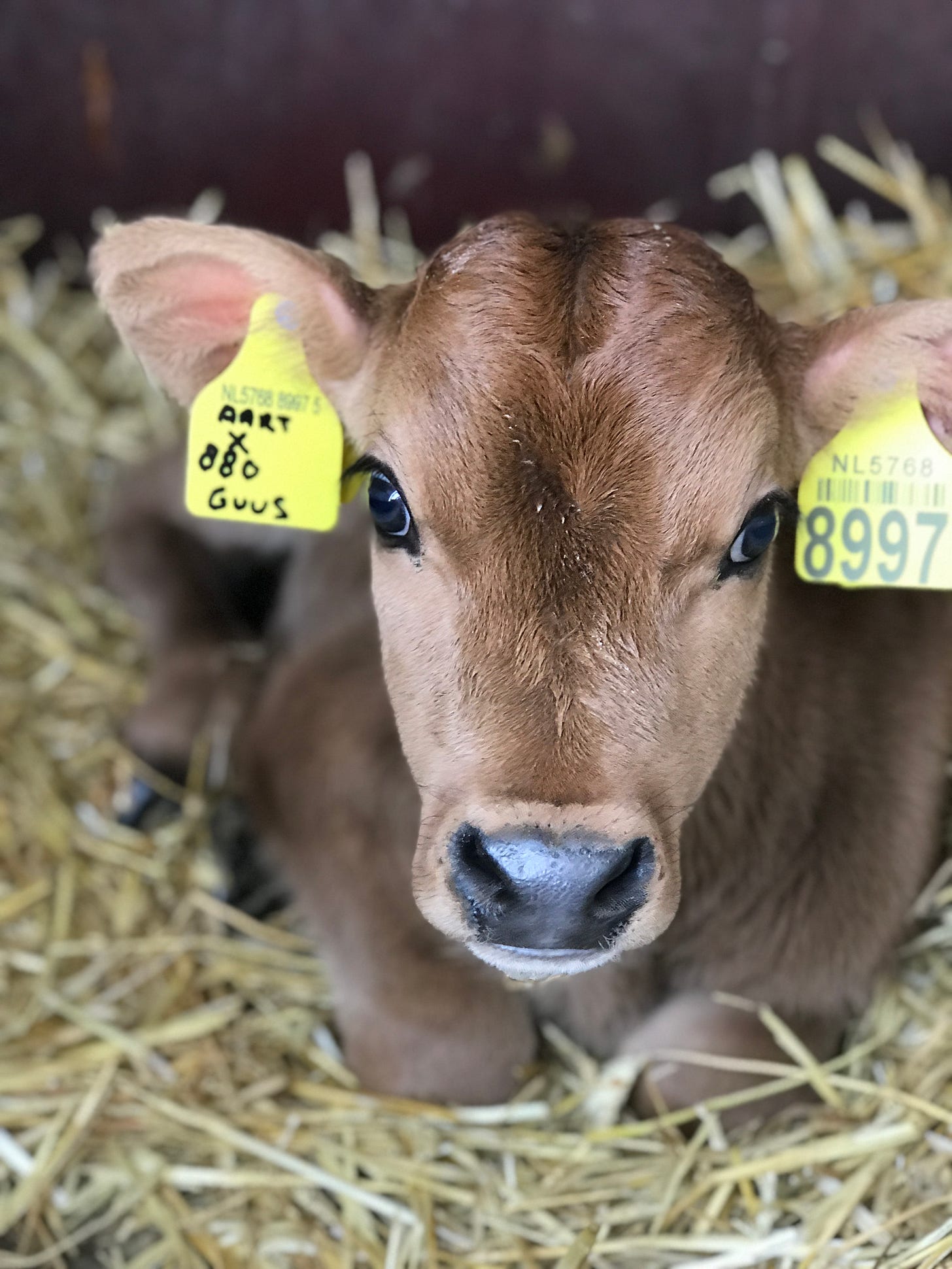Journeying Through the Netherlands on a 9-Day Gouda-Centric Expedition
Gouda is a much more complex cheese than many realize. Here, I demystify the delicious cheese.
Gouda might not be the first thing that comes to mind when booking a trip to the Netherlands, but for true cheese connoisseurs, it’s the perfect excuse to explore green pastures, get lost in the countryside, and savor exceptional cheese.
Anna Juhl, owner of Cheese Journeys, spent three years traveling through the Netherlands to perfect a nine-day cheese expedition. Her goal? To demystify Gouda—a now-generic term for a wide range of cheeses. Gouda never received a PDO (Protected Designation of Origin) before becoming synonymous with brightly colored, processed cheeses marketed to tourists at famed markets and beyond. “This has caused confusion and misunderstanding of their heritage, which should be tied to high-quality, consistent Gouda cheese,” Juhl explains.
The Dutch have worked to preserve their cheese heritage, distinguishing authentic Gouda from its mass-produced counterparts. As Juhl points out, several notable cheesemakers are diligently restoring the reputation of Dutch cheese: Betty Koster of Fromagerie L’Amuse (a renowned cheese shop with two locations in the Netherlands), Jan Dirk of Remeker, Roos and Jan van Schie of Wilde Weide, and Beemster.
My journey began at Amsterdam’s Lindengracht market, where rainbow-hued, wax-coated cheeses reminded me of holiday gift boxes of smoked Gouda and summer sausage from my childhood. But these are not real Gouda—they never were. To find authentic Dutch cheese, one must look beyond the label. “It dumbs down a cheese by calling it Gouda,” Koster says.
Often referred to as the “Julia Child of cheese,” Koster has introduced stellar Dutch cheesemakers to the world. “She’s a pioneer in the world of Gouda,” Juhl notes. “Her grandmother owned one of the first cheese shops in the Netherlands, and whey runs through her veins.” Koster is known for taking risks in aging cheeses, producing some of the most impeccable wheels in Holland. For instance, she ages several wheels of her Brabander goat Gouda six months longer to create the coveted Black Betty. “Only the top sellers of Brabander can get their hands on the cheese, which now has a cult following,” Juhl adds.
Juhl’s expedition begins at Fort Resort Beemster, a luxuriously renovated military fortress just 30 minutes north of Amsterdam. Its completely nude spa cures jet lag, and dinner at Poterne restaurant capped off with a Beemster cheese plate and sparkling wine, sets the tone for the journey.
“When you start to understand the story of Gouda, you must build incrementally, or it’s confusing,” Juhl explains. Her itinerary kicks off with a tour of Alkmaar, a historic cheese market that has practiced local cheese trading for over 500 years.
A tasting at Beemster’s farmer-owned cooperative and state-of-the-art aging warehouse marks the start of Gouda’s story. “While Beemster is making Gouda from milk sourced from many local farmers, its scale does not negate the fact that consistent, high-quality cheese is produced daily from cows grazing on the fertile fields of the Beemster polder,” Juhl explains. The itinerary then transitions to husband-and-wife-operated farms, where the quality remains outstanding.
On the tiny island of Zwanburgerpolder, Jan and Roos van Schie, along with their Montbéliarde and Red Friesian cows, produce Wilde Weide, one of the world’s best cheeses. Here, just seven 25-pound wheels are made by hand each day. Before Koster put it on the map, Jan sold his cheese to a wholesaler who thought it was ordinary.
Lunch with the Schies includes fresh cow milk, artisan bread, and aged cheeses. Wilde Weide, which translates to "wild meadow," tastes like its namesake—grassy meadows, flowers, and caramel notes.
Juhl’s “aha moment” came upon seeing spices in Dutch cheeses. Initially hesitant due to their misuse of lower-quality cheeses, she discovered that skilled cheesemakers use spices as a nod to the spice trade. A slice of Wilde Weide with fenugreek seeds on fruit bread delivers a taste that’s hard to forget.
In Gelderland, Jan Dirk of Remeker demonstrates a deep connection to his land and cows. “He carefully tends to each wheel, even washing the cheese with his own ghee to create a natural rind that breathes and matures alongside the cheese,” Juhl explains. “That’s also why you can eat the rind, which provides unexpected taste sensations.”
Later, I joined Naomi Nieuwenhuis, owner of Country Home Cooking in De Rijp, to forage local flora for a pesto made with Beemster cheese, sunflower seeds, smoked garlic, and sunflower oil. Nieuwenhuis consistently incorporates Beemster into her cooking school’s dishes, sharing its caramelized, nutty flavor one recipe at a time.
A detour to Koster’s newest L’Amuse cheese bar in IJmuiden included a seafood spread paired with tiered servers of young cheeses. While Americans associate sliced cheese with processed products, the Dutch commonly eat unaged cheese slices for breakfast on bread with various toppings. “This explains why Boska’s most-sold product is the cheese slicer,” Juhl notes. A visit to Boska’s studio showcased stylish cheese tools and how to curate elegant cheese boards back home.
The journey concluded at Ajuma in Zandvoort, where Koster hosted a beachside cheese and tea pairing. She explained that tea awakens the palate, enhancing cheese flavors in a way that beer or wine cannot. With a sunset, salty air, and impeccable pairings, I finally grasped what Gouda truly represents—a skill mastered by a select group of Dutch cheesemakers eager to share their craft with the world.
Weeks later, I walked into Trio in Kitty Hawk, North Carolina, and spotted Beemster XO, Wilde Weide, Brabander, and L’Amuse’s aged Gouda side by side in the cheese case. Thinking back to Juhl’s expedition, it all clicked. Gouda is Gouda, but Dutch cheese stands in a class of its own. For true Dutch cheese, education is essential. “Ask for the cow breed,” Koster advises. “It says it all.”
Writer’s Note: This story was originally published in Departures on July 24, 2019, during what I fondly consider my “heyday” in writing—a time from 2017 to 2019 when storytelling felt vibrant, engaging, and truly enjoyable. Since then, Departures has undergone numerous changes, and in its current iteration—whatever it claims to be now—has erased all of my travel stories. This is a story I felt compelled to resurrect.
Stay tuned for a revised Bitchen coming soon! And check out Cheese Journeys’ many different cheese trips as they’ve evolved in the last few years.







Fun read for a journey back in time ;)
RIP Departures!